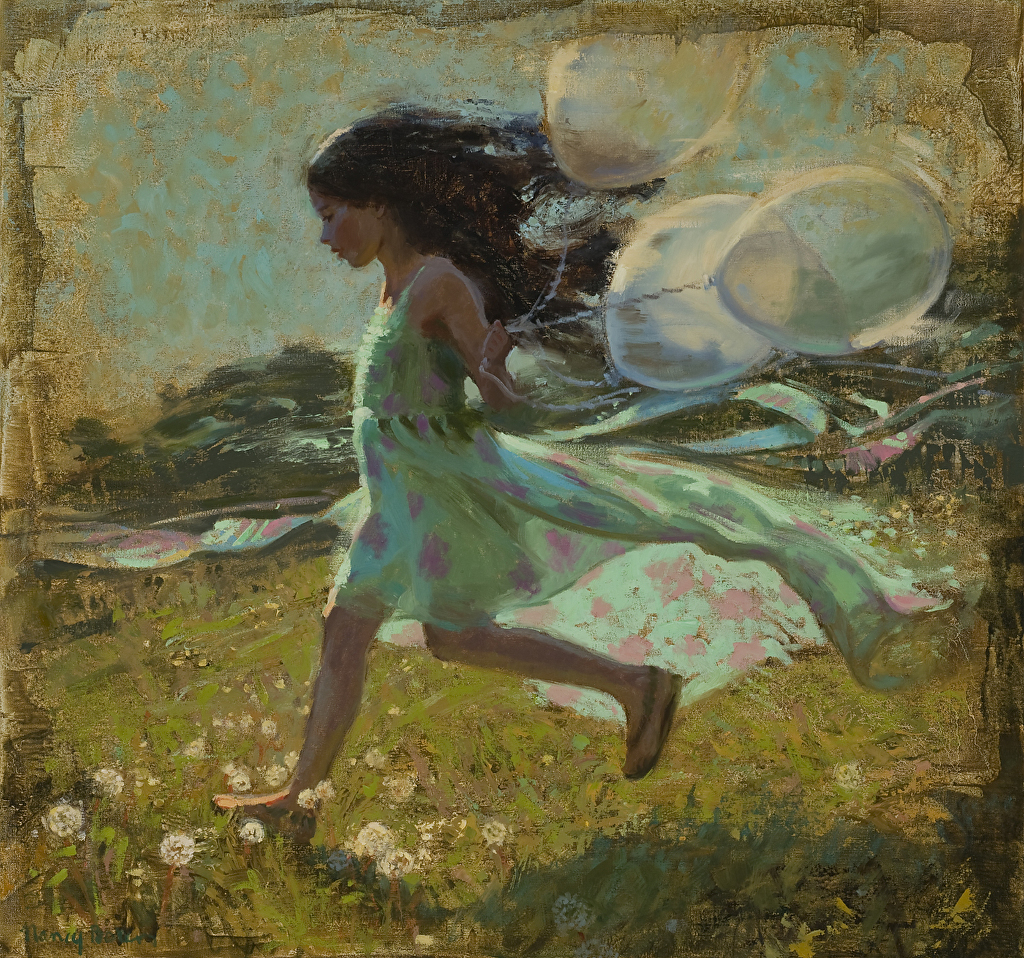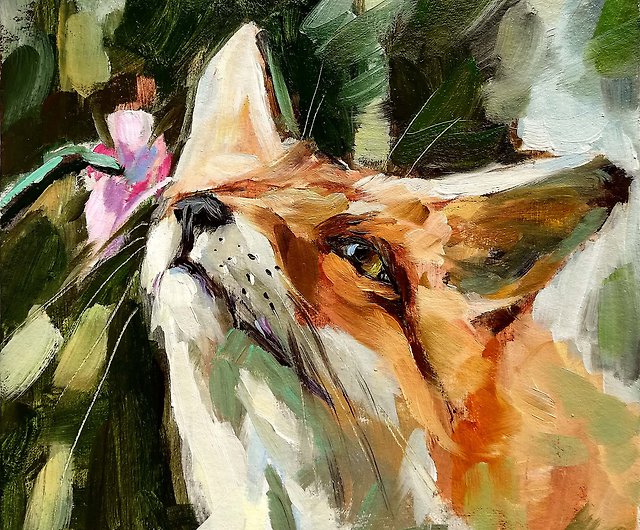Discovering Everything About Oil Paints: An Overview to Understanding Their Charm and Worth
Oil paintings have actually astounded target markets for centuries, using a glance into the creative mastery of different ages. Their rich history is linked with ingenious techniques and extensive emotional expression. Understanding the materials and techniques behind these artworks can boost admiration. In addition, the marketplace for oil paintings presents chances for collectors and capitalists alike. As one discovers this fascinating world, the concern emerges: what makes an oil paint truly important?
The Background of Oil Painting: A Trip Through Time
Although oil paint has roots that go back to ancient times, it really thrived during the Renaissance, when artists found its convenience and abundant color capacity. Early instances can be mapped to the 7th century, with strategies progressing especially throughout societies. The tool ended up being popular in Northern Europe in the 15th century, especially with the jobs of musicians like Jan van Eyck, that spearheaded its usage for comprehensive realistic look and dynamic hues. This period marked a separation from tempera paints, enabling better deepness and appearance. As oil painting spread, it influenced plenty of artists, resulting in work of arts by popular figures such as Leonardo da Vinci and Rembrandt. The medium's heritage proceeds, forming the art globe well into contemporary times.
Comprehending Oil Paints: Materials and Techniques
As musicians explore the world of oil paints, they run into a diverse array of products and methods that specify this medium. The primary elements of oil paint consist of pigments, which give color, and drying oils, such as linseed, that bind the pigments and assist in application. Various additives can customize the paint's texture and drying time, enhancing versatility. Methods like glazing, where transparent layers are developed, and impasto, which entails applying thick paint, enable different visual effects. Furthermore, making use of brushes, scheme knives, and even fingers can create unique structures and surfaces. Comprehending these strategies and materials allows artists to fully express their creativity and achieve the wanted impact in their art work.
The Role of Color in Oil Paintings
Shade plays a critical function in oil paints, affecting both aesthetic charm and emotional resonance. Comprehending color concept basics, consisting of the connections in between colors, can improve a musician's capability to share state of mind and environment. Additionally, mastering color blending techniques enables greater depth and splendor in a painting's palette.

Color Concept Basics
Recognizing color concept is crucial for artists collaborating with oil paints, as it develops the structure for developing visually engaging and harmonious compositions. Shade concept incorporates the research of just how colors engage, the color wheel, and the connections between key, second, and tertiary colors. Musicians make use of corresponding colors to boost contrasts and produce centerpieces, while similar colors promote unity and cohesiveness within a piece. In addition, the principles of cozy and trendy shades affect the assumption of deepness and room in a paint. Comprehending these principles allows artists to control shade efficiently, leading the visitor's eye and interacting their designated message. Mastery of shade theory inevitably improves a musician's capacity to share emotions and concepts through their work.
Emotional Effect of Color
The emotional impact of shade in oil paintings plays a critical role in exactly how viewers attach and view with artwork. Shades stimulate particular feelings and state of minds, influencing the visitor's psychological state. For circumstances, warm shades like reds and oranges can produce a sense of heat and energy, while amazing tones such as blues and environment-friendlies typically evoke peace or self-contemplation. Artists tactically choose shade palettes to enhance narrative elements, leading the audience's psychological trip. The saturation and comparison of shades additionally magnify these impacts, drawing attention and creating focus. Inevitably, the interaction of colors in oil paintings not only enhances their visual allure yet additionally works as an effective tool for psychological expression, improving the viewer's experience and analysis.
Shade Combining Techniques
While lots of elements of oil painting add to the general structure, grasping color blending methods is crucial for achieving desired results and depth. Color blending can be approached through various approaches, including the subtractive and additive processes. Additive blending involves integrating colors of light, while subtractive mixing counts on pigments, where shades blend to produce new tones. Artists commonly utilize a limited combination to create unified works, recognizing the connections in between primary, second, and tertiary colors. Strategies such as glazing and scumbling additionally enhance deepness and luminosity. By masterfully mixing colors, an artist can evoke feelings, create prime focus, and accomplish a sense of realistic look, eventually elevating the paint's visual and emotional influence.
Famous Oil Painters and Their Iconic Functions

Famous for their proficiency of shade and technique, oil painters have actually created a few of one of the most well known art work in background. Renowned artists like Vincent van Gogh astounded target markets with his emotive brushwork in "Starry Night," while Claude Monet's "Impression, Dawn" laid the foundation for Impressionism. Leonardo da Vinci's "Mona Lisa" stays a long-lasting sign of creative brilliant, showcasing his skill in catching human expression. Rembrandt's "The Evening Watch" shows his innovative usage of light and shadow. Various other notable numbers consist of Pablo Picasso, that reinvented contemporary art with his strong experimentation in works like "Les Demoiselles d'Avignon," and Georgia O'Keeffe, whose lively representations of landscapes and blossoms helped define American innovation. Each musician's distinct style added substantially to the oil paint landscape.
Exactly how to Assess the Quality of an Oil Painting
Assessing the quality of an oil paint includes a careful analysis of workmanship techniques, as well as an evaluation of color and make-up. Observing brushwork, layering, and the application of paint can expose the artist's skill degree. Furthermore, the interplay of shades and the overall setup of aspects contribute significantly to the painting's visual value.
Examining Craftsmanship Techniques
A careful assessment of workmanship strategies is crucial for figuring out the quality of an oil paint. Evaluators need to first examine the application of paint; thick, distinctive brushstrokes may recommend a proficient hand, while overly consistent applications might show a lack of deepness. oil paintings for sale. The layering technique is likewise vital; the existence of glazes and differed thickness can improve luminance and complexity. In addition, the quality of the materials made use of, such as the canvas and pigments, plays a significant function in sturdiness and overall aesthetic. Attention to information in aspects like edges and shifts between shades reflects the artist's dedication to their craft. Ultimately, these methods add to the painting's emotional effect and market price, acting as indicators of the artist's ability and intent
Analyzing Color and Structure
While reviewing the high quality of an oil paint, one should concentrate on the interplay of color and make-up, as these elements are essential to the art work's general impact. Color options can develop and stimulate feelings state of mind; therefore, the artist's palette need to be analyzed for harmony and contrast. A well-balanced composition guides the audience's eye and produces a sense of unity. Artists frequently utilize methods like the policy of thirds or leading lines to enhance aesthetic passion. Furthermore, making use of light and darkness can add deepness, enhancing the three-dimensionality of the paint. Ultimately, an effective oil paint weds color and composition, engaging the viewer and welcoming a deeper admiration of the artist's vision and strategy.
Caring for and Preserving Oil Paintings
Proper care and preservation of oil paintings is important for preserving their stability and longevity. To protect these art work, it is crucial to show them away from straight sunlight, which can cause fading and staining. Preserving a stable setting with regulated temperature level and moisture additional help in preventing damages. Cleaning ought to be done gently using a soft, completely dry towel, staying clear of any kind of harsh chemicals that could harm the paint or varnish. Normal examinations for indicators of damage, such as flaking or fracturing, are suggested. When moving or saving oil paintings, appropriate cushioning and framing are necessary to stay clear of physical damage. get more info Ultimately, diligent treatment adds to the visual allure and worth of oil paintings over time.
The Marketplace for Oil Paints: Spending and gathering
Understanding the marketplace dynamics for oil paints is crucial for capitalists and collectors alike. The worth of these art work is influenced by different aspects, consisting of the artist's track record, historic significance, and existing patterns. Collectors frequently seek items that resonate directly while taking into consideration prospective admiration in worth. Public auctions and galleries offer as key locations for trading, with prices varying based upon demand and rarity. Spending in oil paints needs study right into the marketplace, as well as an understanding of authenticity and provenance. Furthermore, arising artists may supply opportunities for significant returns, while developed names can regulate high prices. Generally, a tactical technique to accumulating can yield both aesthetic satisfaction and financial rewards.

Often Asked Questions
What Are the Ecological Impacts of Oil Paint Materials?
The ecological impacts of oil paint materials consist of the release of unstable organic compounds (VOCs), unsafe waste generation, and source removal for pigments. These factors add to pollution and ecological degradation, raising issues among ecologically mindful artists and consumers.
How Do Different Canvases Affect Oil Painting Outcomes?
Various canvases influence oil painting results significantly. Surface area, absorbency, and appearance high quality can change paint application, drying out times, and shade vibrancy. Musicians typically choose details canvases to accomplish preferred results and boost their imaginative expression.
Can Oil Paintings Be Brought Back if Damaged?
If harmed, Oil paints can certainly be recovered. Professional conservators use various strategies to fix tears, tidy surface areas, and address discoloration, ensuring that the art work maintains its original beauty and worth for future generations.
What Are the Indications of an Original Oil Painting?
The signs of an initial oil painting consist of visible brush strokes, texture variants, and an uneven canvas weave (oil paintings for sale). Additionally, authenticity might be validated via provenance, trademarks, and the visibility of a varnish layer unique to oil tools
Just How Has Innovation Influenced Modern Oil Painting Techniques?
Innovation has significantly influenced modern oil painting strategies by presenting electronic devices for planning, enhanced materials for appearance and long life, and on-line systems for marketing and sharing art, therefore increasing musicians' innovative possibilities and audience get to. Oil paint has roots that date back to ancient times, it absolutely thrived throughout the Renaissance, when artists found its convenience and rich shade possibility. The emotional effect of color in oil paintings plays an essential function in just how audiences link and perceive with art work. While lots of elements of oil painting add to the overall composition, understanding color mixing methods is vital for achieving preferred results and depth. Examining the top quality of an oil painting involves a careful analysis of craftsmanship strategies, as well as an analysis of shade and make-up. While assessing the top quality of an oil paint, one must focus on the interplay of color and composition, as these elements are essential to the artwork's general effect.